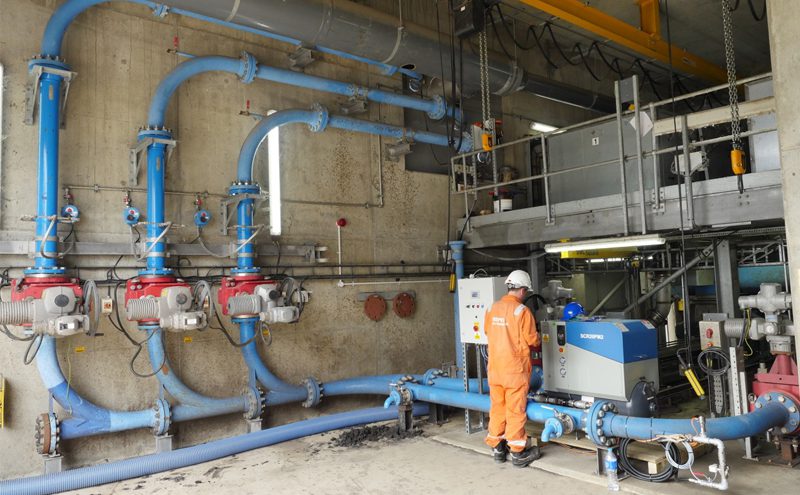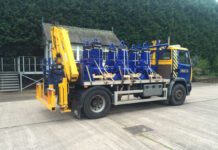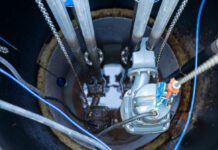Progressive cavity pump specialist SEEPEX has developed a new system that it says will improve dewatered sludge handling, enabling long distance transfer with reduced operational costs by using a combination of PC pump technology and dense-phase conveying. The technology has already been trialled by Thames Water at its Reading Sewage Treatment Works (STW) and is now being installed as part of the new Thames Water Riverside project, providing what the firm describes as an energy-efficient, high-performance alternative to conventional sludge handling systems
The technology in question, Smart Air Injection (SAI), had generated interest with Thames Water, in relation to a new project at Riverside STW to handle dewatered sludge.
Testing the water
Following a visit by the utiity’s representatives to observe SAI in action in Sweden, the company decided to measure the potential energy savings it could make by installing a trial SAI system at its Reading STW. This site had previously used piston pumps, but as a result of process limitations and high operating costs, Thames Water switched to SEEPEX’s multistage PC pumps in 2014. This solution halved Thames Water’s energy use, as well as reducing transport and maintenance costs. Four years on, it was time to see if SAI could improve things further.
The SAI Reading trial set out to not only prove the technology, but to quantify the additional energy savings that could be delivered by pumping the dewatered biosolids from the centrifuge discharge to the storage silo. An SAI trial unit, including full controls and monitoring, was installed on the SEEPEX multistage PC pumps for a trial period and the results were recorded.
During the trial, energy use and discharge pressure measurements were taken. Using these figures, together with the volume and height of the discharge pipework, SEEPEX engineers could then calculate the optimum amount of air required. The trial concluded the energy saving with SAI compared to a multistage PC pump without air injection was 15%. Compared to the original piston pumps, the energy saving was an astonishing 61%.
However, there were even greater savings to be made by switching to a single stage SAI pump fitted with SEEPEX’s Smart Conveying Technology (SCT), instead of the multistage pumps currently in use. Air usage data from a working SAI installation using SCT pumps in Belgium, enabled SEEPEX to produce an estimate for Thames Water, based on the trial results from Reading. It concluded that, if SCT single stage pumps were used in place of multistage pumps, the energy saving at Reading STW would be approximately 40%. When compared to the original piston pumps, an SAI system with SCT pumps would reduce energy consumption on this application by approximately 75%.
SCT pumps deliver a range of other benefits, too: reduced investment costs; longer service intervals; lower maintenance costs; smaller pump footprint; maintain in place capability; and long distance transfer of non-flowable products.
As a result of the successful Reading trial, Thames Water has procured several of SEEPEX’s SAI units for its Riverside project. “We were faced with a particularly tough challenge at Riverside,” explains Paul Fountain, Senior Consultant – Biosolids, for Thames Water. “Replacing a problematic conveyor system with proven PC pumps was the preferred solution, but due to very tight space constraints, low access walkways and a labyrinth of pipework to work around, the traditional multi-stage pump was not going to be possible.”
“Working with SEEPEX, we decided to purchase several single stage Smart Conveying Technology PC pumps, coupled with SEEPEX Smart Air Injection innovation,” continues Paul. “This allowed us to significantly reduce the pump length and installed motor powers, and has the added benefit of ease of maintenance.”
How the air injection technology works
Smart Air Injection technology works in the following way. A solid ‘plug’ of dewatered sludge is formed by an open hopper pump, which is then split into smaller plugs and transported onwards using compressed air in the discharge pipework. Air injection is tailored to each application on-site, using algorithms to ensure that the discharge pressure remains below 4 bar. The sludge plug is lubricated with boundary layer liquid, which reduces friction losses in the pipework and improves the energy efficiency of the system as a whole. Adjusting system parameters such as plug length, boundary layer liquid and air volumes on-site makes it possible to set application-specific, energy efficient, operating parameters.
In addition, SAI is a highly automated system, with connected services to allow for real-time pump monitoring. Smart control is integrated into existing automation and control systems via conventional interfaces, enabling remote monitoring of pump and system performance. This delivers optimised process conditions, maximum energy savings and increased pump service life. All functional components, sensors and actuators are part of the scope of supply, and are integrated into the SAI control software, configured to each application.
Already in operation at a number of sites throughout Europe, SEEPEX says SAI is now set to improve sludge handling at Thames Water’s Riverside project. At a recent seminar held at Thames Water’s Reading site, delegates from UK Water plc enjoyed a demonstration of the technology in real time and were able to identify areas of their processes that could benefit from SAI, both in terms of increasing energy efficiency and reducing transport costs. Potential improvements that were highlighted during the seminar included: increasing the dry solid content (ds%) of sludge, where plant layout and high discharge pressure has limited it to date; removing problematic conveyors; and replacing legacy pumps with more energy efficient SCT models.







